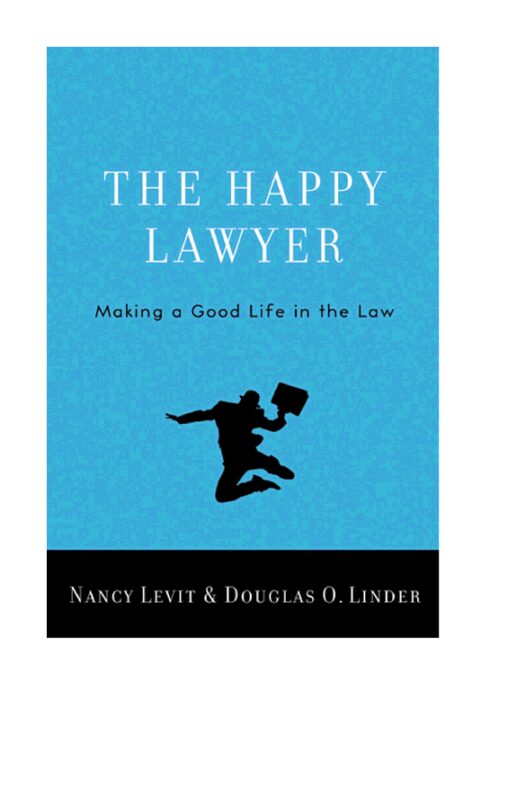Michael Sean Quinn, Ph.D., J.D.
QUINN and QUINN
1300 West Lynn Suite 208
Austin, Texas 78703
QUINN and QUINN
Attorneys owe their clients a duty of undivided loyalty. Employers Cas. Co. v. Tilley, 496 S.W.2d 552, 558 (
(Tex. App.—El Paso 1984, aff’d.) 702
S.W.2d 653 (Tex. Crim. App. 1986).
“The relationship of attorney and client is one of the highest
trust and confidence and in dealing with a client, an attorney must act with
the utmost fairness and in good faith.”
David Beck, Legal Malpractice in
(2nd Ed.), 50 Baylor L.Rev. 550, 607
(1998). —Lots of good cites
can be found in this Article by a former State Bar President.
The relationship between attorney and client is one of
“uberrima fides.” The integrity of such
relationship should be carefully observed and scrupulously upheld at all times. Smith v. Dean, 240 S.W.2nd 789, 791 (Tex. Civ.
App.—Waco 1951, no writ). The phrase, uberrimae
fidei is defined: “Of the utmost good
faith[.]” David M. Walker, The
1245 (1980). Other legal dictionaries
are not substantially different. Black’s
Law Dictionary (1968), for example, defines uberrima fides this way: “The most abundant good faith; absolute and
perfect or openness and honesty; the absence of any concealment or deception, however
slight. A phrase used to express the
perfect good faith, concealing nothing….”
example. (According to this entry in Black’s,
years ago insureds owed this duty to insurers.
Times have changed. So has Black’s. The current Eighth Edition has almost nothing
interesting to say on the general subject.)
The fiduciary obligation running from attorneys to
clients is at the heart of the attorney-client relationship. Attorney-to-client “fiduciary obligations are
at the heart of the attorney-client relationship, and enables the client to
place unhesitating trust in the attorney’s ability to represent them
effectively.” Beck, supra note #2 at 608-609.
Attorneys owe their clients the highest fiduciary
duties. Bloyet v. General Motors Corp., 881 S.W.2d 422, 436 (Tex. App.—Texarkana
1994), aff’d 916 S.W.2d. 949 (
1996); Judwin Properties, Inc. v. Griggs & Harrison, 911 S.W.2d 495, 506
(Tex. App.—Houston [1st Dist.] 1995, no writ).
The attorney-client relationship is highly fiduciary in
nature and requires the utmost good faith.
The relationship running from attorney to client carries the utmost
(i.e. the most abundant) good faith obligations.
The attorney-client relationship running from the
attorney to the client is one involving the highest good faith. “‘The cardinal
principle that an attorney owes his client the highest of good faith furnishes
the basis for a number of legal doctrines.’” ([“In 5
[citations omitted].)[2] (Bold added.)
Attorneys must treat their clients in such a way that
the clients apparently can have the highest
trust and confidence in the attorney. Smith
v. Dean, 240 S.W.2d 789, 791 (Tex. Civ. App.—Waco 1951, no writ).
Clients must be able to rationally rely upon their
attorneys to act in their – that is the client’s – best interest within the
scope of the representation (Clients must also be able to trust their attorneys
not to act against their interests in other areas, at least without antecedent
discussion, advice, action, and so forth.) Question: What if C does not want L
to act in his best interest? Should L do it anyways? If L does this, should he
conceal it from C?
fiduciaries of their clients, attorneys must place the interests of the clients
ahead of their own. Rogasga, Inc. v. Bank One, 932 S.W.2d 655, 663 (Tex.
App.—Dallas, 1996, no writ). When there
is a fiduciary duty, running from one party to another, the second party is
justified in relying upon the first party to act in its best interest. The “its” here refers to the second
party.
attorney-to-client relationship must be carefully observed and scrupulously
upheld by the attorney at all times. Smith,
#8 at 791.
are obligated to render full and fair disclosure of facts to their clients,
when those facts are in any way material to the attorney’s representation of
the client. Willis v. Maverick, 760
S.W.2d 642, 645 (
1988). See, Beck, supra # 2 at 610.
owe their clients absolute and perfect candor, openness, and honesty at all
times. See, Employers Cas. Co. v. Tilley, 496 S.W.2d 552, 558 (
Properties, Inc. v. Griggs & Harrison, 911 S.W.2d 948, 506 (Tex.
App.—Houston [1st Dist.] 1995, no writ).
See In re Legal Econometrics, Inc., 191 B.R. 331, 346 (Bankr. N.D.
relationship from attorney to client must involve the “absence of any concealment
or deception, however slight.” State v.
Baker, 537 S.W.2d 367, 374 (Tex. Civ. App.—Austin 1976, writ ref’d n.r.e.) See, Legal Econometrics, supra #11 at 346; Judwin,
supra #11 at 506; and Byrd v. Woodriff, 891 S.W.2d 689, 700 (Tex. App.—Dallas
1994, writ den’d).
must preserve the confidences of their clients.
NCNB Texas National Bank v. Coker, 765 S.W.2d 398, 399 (
confidentiality and may involve C secrets.
must rationally feel free to rely upon the advice of their attorneys.
must treat their clients in such a way that it is rational for the clients
unhesitatingly to fully trust the attorney.
must preserve and maintain confidential information about their clients,
however derived. This is a fiduciary
duty as well as a duty in the rules of professional conduct.
must disclose as soon as possible to clients any and therefore all information
that might prevent attorneys from fulfilling fiduciary duties to given clients.
a conflict develops between the interest of one client and another, so far as
the attorney is concerned, the attorney owes a duty to each of the clients
immediately to disclose and identify the conflict. Employers Cas. Co. v. Tilley, 496 S.W.2d 552,
558 (
1973).
that is required for fiduciary duties to exist, [running from the attorney to
the client,] is that the parties, explicitly or by their conduct, manifest an
intention to create an attorney-client relationship.” [supra #2 at 609.] See, Vinson & Elkins v. Moran, 946 S.W.2d
381, 408 (Tex. App.—Houston [14th Dist.] 1997, writ dism’d by agr.).
many circumstances, an attorney has fiduciary duties to former clients. These certainly include the duty of
confidentiality. Under many
circumstances, it will also include the duty of loyalty.
an attorney over-charges a client, the attorney breaches his/her fiduciary
duties. Gouging is a special stealing for the fiduciary.
an attorney knowingly or even negligently implies to a client that he is
entitled to what is, in fact, over-payment, the attorney breaches a fiduciary
duty. This is species of lying.
the relationship between the attorney and the client is fiduciary in nature,
there is a presumption of unfairness or invalidity attached to attorney-client
contracts formed during the relationship.
duties are equitable in nature and generally not subject to hard and fast
rules. So the extent and nature of such duties under some circumstances should
be considered in light of the contract, relationship, and/or history between
the lawyer and client. National Plan
Administrators, Inc. v. National Health Ins. Co., No. 05-006 (
does not involve attorneys but the principal-agent relationship. It should have
at least some authority in thinking about the attorney client relationship.
Perhaps the second sentence will not have absolute authority.
*********************************************************************************
It is interesting to note that in a number of jurisdictions, legal malpractice is not recognized as a cause of action in legal malpractice cases. The real reason is seldom stated. Instead there is a simple reference to “fracturing.” Here is the reason. A lawyer owes all of his/her a fiduciary duty. And all attorney malpractice actions are grounded upon negligence. Plus, all malpractice actions require that the defendant lawyer do what another prudent lawyer would do under the circumstances. So what does all this amount to. The negligence of the lawyer is measured against his carrying out his fiduciary duty. It is not measured against how the average prudent citizen would act, say in driving his car. Alas, this complication is not explained to juries well enough





Recent Comments